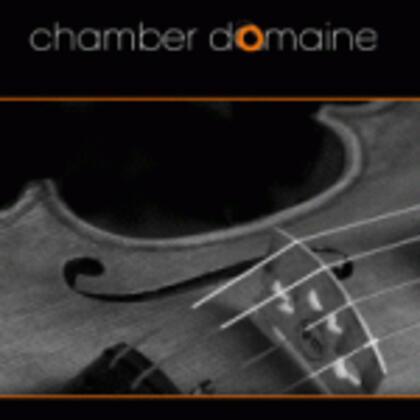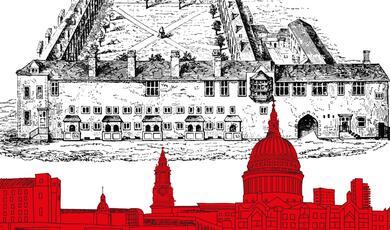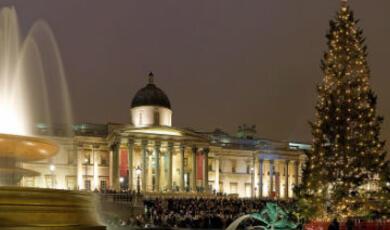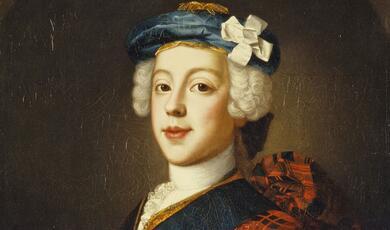Mahler and the World of Yesterday
Share
- Details
- Text
- Audio
- Downloads
- Extra Reading
The World of Yesterday by Stefan Zweig is perhaps the finest account of Mahler's Vienna. Written as an autobiography and ending with his suicide note from 1942, this eyewitness account details the unique cultural life of Vienna before the First World War and the extraordinary developments in architecture, music, literature and painting. The lecture explores the cultural environment and the background to Mahler's music and his role as the Music Director of the Vienna State Opera. It also provides an account of the tumultuous events that shaped Mahler's posthumous reception.
The concert features contemporaries of Gustav Mahler who worked in and around Vienna towards the end of the nineteenth century:
Gustav Mahler - Piano Quartet (1876)
Anton Webern - Two Pieces for Cello and Piano (1899)
1) Langsam
2) Langsam
Alexander Zemlinksy - Serenade in A for Violin and Piano (1899)
1) Mässig-Energisch
2) Langsam, mit grossem Ausdruck
3) Sehr schnell und leicht - Trio Ruhiger
4) Mässiges Walzertempo - Trio Dasselbe Zeitmass, nur etwas breiter
5) Schnell
Johannes Brahms - Piano Quartet in C minor Op.60 (1875)
1) Allegro non troppo
2) Scherzo
3) Andante
4) Finale - Allegro Comodo
GUSTAV MAHLER: My time will come
A series of concerts by leading ensemble Chamber Domaine, praised in The Gramophone for its "tremendous sense of vitality and commitment...compelling listening." Each concert is preceded by a talk by Thomas Kemp, the ensemble's artistic director. The length of each event will vary but will end at approximately 8pm. To reserve a place, please apply to Gresham College. There is always a great demand for these events. Seats will be reserved until 5.45pm, after which they may be offered to others.
2010 and 2011 mark the 150th and 100th anniversaries of Gustav Mahler's birth and death. Today Mahler is one of the world's most popular composers yet during his lifetime he deeply divided critical opinion. Mahler himself predicted: "Mein zeit wird kommen." He is without doubt one of the leading cultural figures of the twentieth century and has been profoundly influential. This series will explore his music and that of his circle, which included the composers Schoenberg, Zemlinsky and Strauss, in a way that will illuminate his legacy and influence on the generations that followed.
Download Text
Mahler and the World of Yesterday
Thomas Kemp
Gustav Mahler was appointed the director of the Vienna Court Opera in 1897 – one of the leading opera houses of the world and at the physical and spiritual epicenter of the Austro-Hungarian Empire. With his appointment in 1898 as the music director of the Vienna Philharmonic, his elevation to the summit of Austro-German music was complete: the top of what Stefan Zweig describes as “a wonderfully orchestrated structure” – a society where the arts were at its centre and music was the highest art and the greatest aspiration. Music mattered and was the talk of the town: the focus of newspaper articles, performed in homes and avidly discussed in coffee houses. It involved everybody from all walks of life in an age before mass media and the many diversions we have today. Mahler was treated like a super star and members of the Vienna Philharmonic were treated like celebrities: the public would raise their hats to them when they walked down the street.
From 1848-1916, Emperor Franz Josef I ruled the Austrian Empire. Vienna was the hub of a vast empire that was the second biggest landmass in Europe after the Russian Empire, possessed the 3rd largest population in Europe and contained eleven principal national groups. Vienna, as the capital of this Empire was a cultural melting pot: a multicultural city where Italian, German, Croatian, Serbian, Hungarian, Ukranian, Turkish and Slavonic were spoken reflecting the diversity of the Austrian Empire. For an author like Zweig, Franz Josef presided over a golden age where everyone knew their place, the economy was stable, there was growing affluence and political reform.
This was the age when many of the most impressive buildings in Vienna were built: reflecting the might and prosperity of empire. A great example of this is the iconic Ringstrasse, which was built between 1860 and 1890, which includes buildings such as the Hofoper[1], The Parliament [2], The Burgtheatre[3] and the Rathaus[4]. Many of the aristocracy and plutocracy had houses and apartments on this grand, tree-lined ring boulevard that followed the outline of the old city walls and fortifications. Yet, whilst this street exudes grandeur, permanence and wealth: it was built because of Revolution, which in 1848 led the abdication of Ferdinand I. Practically, the new wide streets, like those built by Napolean III in Paris, were designed to prevent barricades and wide enough to use artillery on protesters: visually the effect was of stability and prosperity. Ringstrasse was a metaphor for the Austro-Hungarian Empire, outwardly prosperous, stable and multinational. Yet it was the steady rise of nationalism in a multicultural empire and the simmering tensions between the different national groups, that was to ultimately prove its undoing.
Stefan Zweig brilliantly captures this era in his autobiography, Die Welt von Gestern – The World of Yesterday which he began writing in 1934 and finished in 1942 in exile in Brazil. One of the 20th centuries greatest writers, he sent the manuscript of his book to the publishers the day before he and his wife committed suicide. For them, the end of the culture they had known and grown up with was too much to bear. He wrote in his suicide note: “I think it better to conclude in good time and in erect bearing a life in which intellectual labour meant the purest joy and personal freedom the highest good on earth”
In his autobiography, Zweig was writing with the benefit of hindsight and with a nostalgia that came from exile. Zweig left Vienna in 1934, anticipating the annexation of Austria by the Nazis, and settled first in England (London and Bath) then Brazil where he committed suicide. He described the era of Franz Josef as follows: “When I attempt to find a simple formula for the period in which I grew up prior to the First World War, I hope that I convey its fullness by calling it the Golden Age of Security.”
Zweig writes about the outward respectability of Vienna – that one had to dress a certain way, have glasses and a beard to be taken seriously! He talks about the formal, staid personalities and the bourgeoisie veneer that was required to get on. He describes Mahler, who became the doyen of Vienna aged 37 as “the astonishing exception.” Indeed, to Zweig, Johannes Brahms outwardly reflected this world of security: bearded, prosperous, distinguished, internationalist and conservative.
Brahms Piano Quartet in C Minor, Op.60 is one of his greatest chamber works and one that he was to agonize over: it took twenty years to write. He began the work in 1855 as a young man of 23 and was a part of Robert Schumann’s household. Torn between friendship and respect for his mentor and love for his wife Clara Schumann.[5]
The Piano Quartet is autobiographical and a highly personal work too revealing for Brahms to have in the public domain and so he put it in a draw, revising it in 1868 and finally completing the work in 1875. He wrote to his publisher: “Imagine a man for whom nothing is left and who wishes to put an end to himself.” This feeling of tragedy pervades the first movement and even the glorious slow movement has a feeling of bitter-sweetness and nostalgic regret. Brahms related this work to the Goethe novel – The Sorrows of Young Werther [6] – empathizing with the main protagonist who shoots himself when he discovers the woman he loves, loves someone else. The Finale begins with a plaintive violin melody, which is very similar to the song Regenlied that Brahms set in 1873 to a poem by Klaus Groth. The text is telling: “The grass is doubly green: doubly on my cheeks show my burning tears.”
Like Mahler, song was to infiltrate Brahm’s chamber music and symphonic works: literature providing an underlying philosophy to the music. Brahm’s music outwardly represented the era: from a classical basis he was writing Romantic music within the Austro-German tradition and aesthetic. At the time, he was presented as the conservative antithesis of the modernist Wagner but from the 21st century perspective, his influence can be viewed differently as a progressive composer writing within and extending a rich tradition that has never gone out of fashion.
Zweig met Brahms when he was 12. An avid collector throughout his life,[7] his obsession started as a child collecting autographs and when he met Brahms he added his signature to his collection. Zweig represented the type of person that was to define Vienna in the early 20th century. Cosmopolitan, cultured, creative, intellectual: self-improving through total immersion in the arts. He came from a moneyed, hard working family that had prospered enormously from the Austro-Hungarian empire: his father a wealthy textile manufacturer and his mother from a Jewish banking family. The family wealth made him free to pursue his artistic interests and he became one the most famous writers of the 20’s and 30’s.
He was well connected and knew many of the leading cultural figures not just in Vienna but also across Europe and North America. As a writer, he was internationally famed for his novellas such as Amok and Letter from an Unknown Woman and wrote libretti for Richard Strauss including Die Schweigsame Frau[8]. Other works include biographies of Erasmus and Marie Antoinette. He also puts the incredible, revolutionary artistic developments of the 1900’s into context in his autobiography. He describes the “underground” including Kokoshka, Klimt, Scheile, Hofmannsthal, George and Schoenberg, as being “erotically obsessed” a reaction to a prurient society that hid behind a veneer of cultivated respectability. He also describes how the formality and conservatism of this society made iconoclasm more inevitable. Indeed, Sigmund Freud – a Viennese contemporary - makes the point that civilization is a “thin veneer” through which the “destructive forces” could break through at any moment. In these arts, these “destructive forces” were to shape the 20th century and radically create new means of expression.
Arnold Schoenberg was already pushing the boundaries in the 1900’s. A work that demonstrates the profound changes that were taking place is his Oratorio, Gurre-Lieder. This work has a Wagnerian plot with a libretto by the Danish novelist, Jens Peter Jacobsen[9] based on the Medieval love tragedy of King Waldemar and his mistress Tove: characters that could easily have been in one of Wagner’s music dramas which often used Nordic myths as their basis.
The forces are Wagnerian. Gurre-Lieder is scored for narrator, 5 soloist singers, choir and a huge symphony orchestra. What is interesting is how the music develops. Schoenberg began the work in 1900 and after several breaks to write other work, finally finished Gurre-Lieder in 1911. During this period, with works such as the Second String Quartet, Op.10, Three Pieces for Piano Op.11, Five Pieces for Orchestra Op.16 and Erwartung, Op.17, he was moving into new modernist and expressionist territories that were to profoundly influence the course of twentieth century music.
The Second String Quartet is emblematic of this shift. The First Movement sounds like Brahms, but as the work unfolds and unusually for a string quartet, a soprano is introduced singing two texts by Stefan George, Litenai and Entrückung. These two movements slip into atonality and announce a shift away from late romanticism as characterized by the opening of Gurre-Lieder. The opening of the fourth movement with the text “I breath the air of a different planet,” embracing a new type of atonal music is a moment like the recitative in Beethoven’s Ninth “Oh friends no more of these sounds. Let us sing sounds more tuneful and joyful” which heralded Romanticism.
Indeed, by the time of the premiere of Gurre-Lieder, on February 23rd 1913 in Vienna, Schoenberg had written his anti-romantic song cycle, Pierrot Lunaire[10], which would be hugely influential. The premiere of Gurre-Lieder, under the baton of Franz Schreker, was a huge success, possibly the biggest in a career where his music was often greeted with incomprehension. Schoenberg refused to acknowledge the applause: “I was rather indifferent, if not even a little angry. I foresaw that this success would have no influence on the fate of my later works. I had, during these thirteen years, developed my style in such a manner that to the ordinary concertgoer, it would seem to bear no relation to all preceding music. I had to fight for every new work; I had been offended in the most outrageous manner by criticism; I had lost friends and I had completely lost any belief in the judgement of friends. And I stood alone against a world of enemies.”
It was this dichotomy between a reserved society with the arts at its heart that made radical progress possible and was to place Vienna at the centre of contemporary culture. It was also this deliberate severing with the past tradition, which made composers such as Schoenberg seem so radical but as his career progressed, he was to increasingly dwell on the inspiration and justification of his innovations by showing the continuity with the past. His article Brahms the Progressive written in 1933 and revised in 1947, is an attempt to put his music in the context of the Austro-German tradition he grew up with in Vienna. Also, his student Anton Webern in his essays The Path to New Music state that Brahms foreshadowed and anticipated many of the developments that were claimed by the Second Viennese School particularly with regards to form, variation technique and harmonic rhythm.
Mahler was a key supporter of Schoenberg although he confessed to not understanding his music. Mahler was the leading conductor of his day and was particularly acclaimed for his interpretations of Mozart, Beethoven and Wagner. He was also responsible for raising orchestral standards, insisting on more rehearsal and putting ensemble precision under much greater scrutiny. He conducted a huge repertoire including much music that was contemporary at the time such as works by Debussy, Rachmaninov, Brahms, Strauss, Verdi, Puccini, Pfitzner, Enescu, Elgar, Liszt and Tchaikowsky. He worked with all the great performers of his day including Josef Lehvinne, Fritz Kriesler, Ferruccio Busoni, Josef Hoffmann, Sergei Rachmaninoff and John MacCormack. He also gave many performances of his own symphonies and song cycles. Indeed, during his lifetime there were over 260 performances of his orchestral works in Europe and North America, many of which he conducted. One of his early works is the Piano Quartet in A which was written whilst he was a student at the Vienna Conservatory. Only the first movement of this work survives alongside an incomplete scherzo. The music is 19th century Romantic and in the mode of Schumann or Brahms - but displays none of the mastery that his early song cycle, Lieder eines fahrenden gesellen (1884-1885) or the First Symphony The Titan (1884-1888) which is heavily influenced by these songs.
Mahler performed the Piano Quartet twice in 1876 and then, it was not until the 1960’s when the work was to be heard again. It is clear that he did not see it as a representative work and so it was never published. During his lifetime, Mahler was often misunderstood as a composer and famously remarked, “My time will come.” His music often represents the multicultural background that was the Austro-Hungarian Empire and includes influences from folk music, Jewish Klezmer, military band music as well as the classical and romantic traditions. As he developed as a composer, he felt that the symphony should contain the world and so these rich resources are used to create music that explores the extremes of expression.
His symphonies are full of musical extremes bringing fully into play all the musical parameters: an approach that is consistent with his performance activities. His retouching of music, particularly Beethoven Symphonies and Schumann Symphonies, show an artist trying to get the maximum dramatic impact out of the music. Mahler wanted the narrative of the music to be absolutely clear.
This was an era before recordings[11] and so audiences only had the chance to acquaint themselves with music in the concert hall or through the piano and chamber music transcriptions that were widely available. Mahler’s own music represents the drawing together of the two polarities of Brahms and Wagner that had dominated the late 19th century.
Mahler was much more influential as a composer than has often been given credit. Take the fabulous song, Ich bin der Welt abhanden gekommen from the Five Ruckert Lieder. This work with its chamber music sparseness touches on the orchestration and sound world of music by composers such as Webern and is the antithesis of Romantic lushness. The same is true of passages in Das Lied von der Erde – another work that demonstrated Mahler’s modernist and often minimalist approach to orchestration.
Zweig’s Golden Age of Security produced startling artistic and cultural advancement of many different types. The Secession building, built overlooking the Ringstrasse encapsulates the old and the new. Built in 1897 to showcase the work of the Secession Movement,[12] the building is modernist yet houses Gustav Klimt’s Beethoven frieze which is a modern take on Beethoven’s legacy. There is no one style in the Secession Movement as there was to be no one dominant style in Twentieth century music. But like the Beethoven frieze, music was looking back as well as forwards to new means of expression and understanding. A new age had arrived: “To every age its art and art its freedom.”[13]
Whilst the end of the First World War was to demote Vienna from a major capital city and hub of an empire to a provincial town, the cultural legacy of the early 1900’s is still resonating with us today in a period that has produced some of the most popular and enduring works of art.
© Thomas Kemp, Gresham College 2010
www.thomaskemp.eu
[1] Hofoper was designed in a neo-romantic style by August Sicard von Sicardsburg and Eduard van der Nüll. It was badly damaged in World War II.
[2] The Parliament was designed in the Neo-Attic style – copying the style of Athens, the cradle of democracy and a symbol of political reform.
[3] The Burgtheatre is the biggest German speaking theatre in the world and together with the opera is very close to the Imperial Palace and therefore at the centre of the empire and what it stands for as a culture.
[4] This impressive building is in the Flemish gothic style and emulates the buildings built in the Netherlands during the 16th and 17th centuries: a visible symbol of mercantilism rather than imperial might.
[5] Clara Schumann (1819-1896) – wife of the composer Robert Schumann and one of the greatest concert pianists of her day. A leading exponent of her husbands work and the music of Brahms and Mendelssohn.
[6] Johan Wolfgang von Goethe wrote The Sorrows of Young Werther in 1774, which established him as a literary celebrity across Europe. The book is semi-autobiographical and was highly influential on the Romantic Movement. Its themes touch on a nihilistic element that runs through the arts in the Romantic era.
[7] Stefan Zweig’s collection of manuscripts are held at the British Library and is one of the most important collections of its kind including musical manuscripts by Bach, Schubert, Mozart, Beethoven, Wagner, Mahler, Haydn, Strauss, Schumann, Verdi, Webern. Literary and political manuscripts include Darwin, Flaubert, Baudelaire, Keats, Thomas Moore, Hofmannsthal, Tolstoy, Rolland, Verlaine, Wilde, Verne, Freud and Hitler
[8] Die Schweigsame Frau was written in 1934 and performed in Dresden in 1935. Strauss insisted that Zweig’s name was on the billing but this annoyed the Nazis and the work was banned after three performances.
[9] Jens Peter Jacobsen (1847-1885) a leading Danish writer and scientist. Key figure in the Naturalist school of writing.
[10] Pierrot Lunaire 1912 – was a revolutionary work. The singer uses Sprechstimme or speech melody to declaim the text – Schoenberg uses this technique in Gurre-Lieder in Der Sommerwindes. Pierrot is a setting of 21 poems of by Albert Giraud. The music is mainly atonal and the orchestration for 5 instruments is spare. Despite sounding modern even today, the work uses many classical forms and techniques such as canon, fugue, rondo and passacaglia. Even Sprechstimme, which is almost anti lyrical, had a tradition in 19th century German theatre and indeed, Schoenberg spent the years 1901-1903 working in the cabaret in Berlin.
[11] Mahler did make some Welter-Mignon piano rolls, which include the first movement of the Fifth Symphony and Ging heut’ Morgen übers feld from Lieder eines Fahrenden gesellen that is also used as the main theme of the Symphony No.1. It is interesting to hear the brisk tempi he uses and the fresh, unfussy lightness of his playing.
[12] The Secession Movement included artists, sculptors and architects including Klimt, Schiele, Moser, Hoffman, Olbrich and Otto Wagner. It was the equilvalent of the Art and Crafts movement in the UK and indeed, Charles Rennie Mackintosh was exhibited there.
[13] The motto emblazoned on the outside of the Secession building: a statement of belief in political reform and artistic freedom.
This event was on Thu, 18 Nov 2010
Support Gresham
Gresham College has offered an outstanding education to the public free of charge for over 400 years. Today, Gresham College plays an important role in fostering a love of learning and a greater understanding of ourselves and the world around us. Your donation will help to widen our reach and to broaden our audience, allowing more people to benefit from a high-quality education from some of the brightest minds.


 Login
Login







